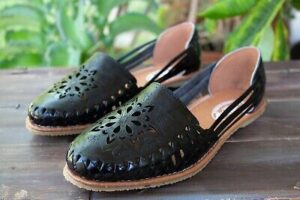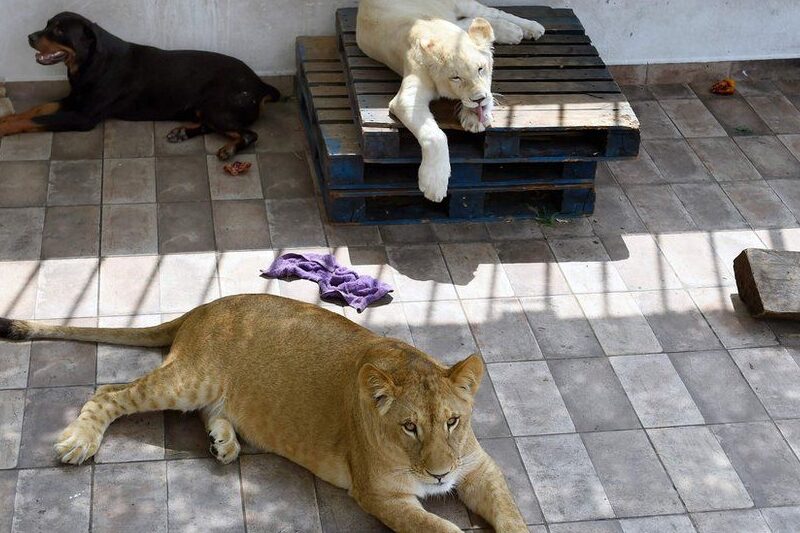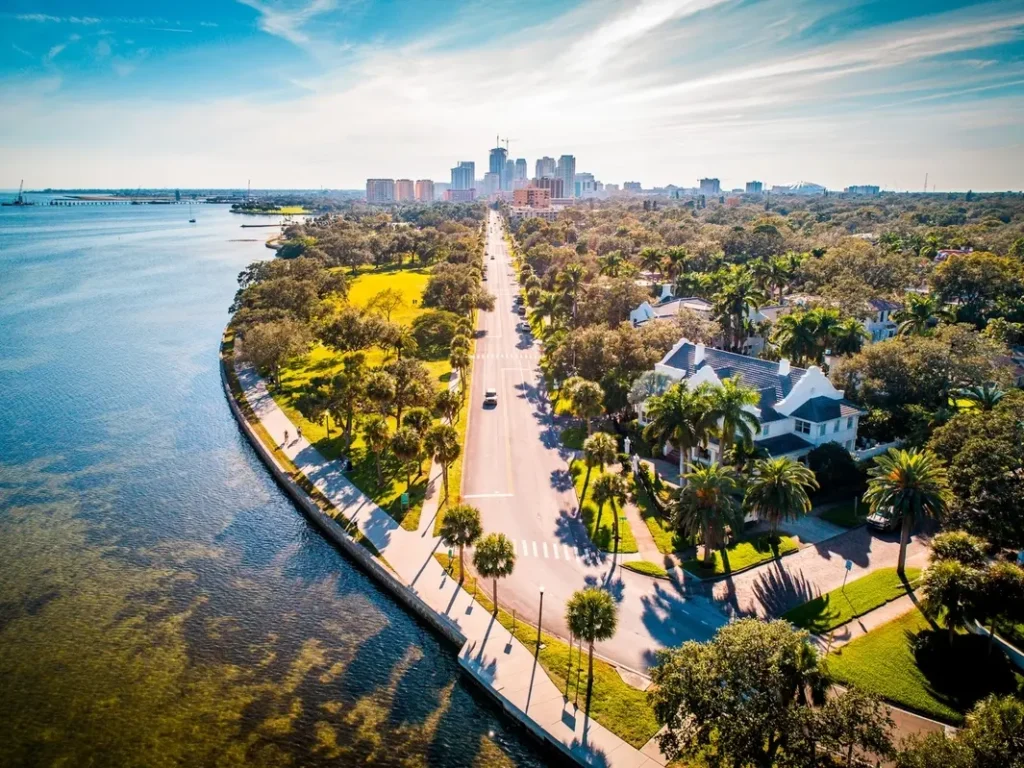The Ultimate Guide to Mexican Sandals: Tradition, Quality, and Style
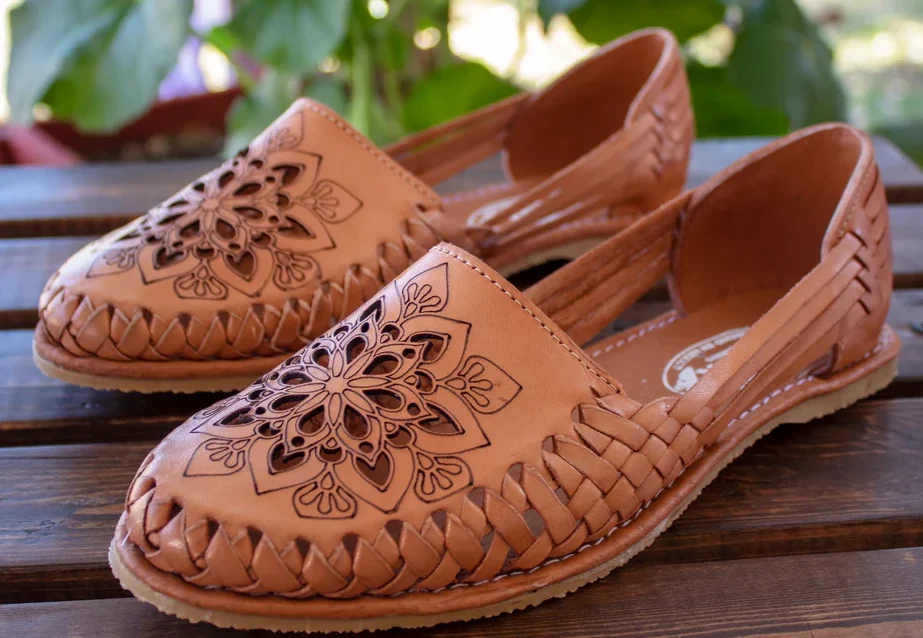
Mexican sandals are part of the culture of this country by expressing the pre-Hispanic tradition, today, they have a large market and are part of the footwear industry in Mexico.
Mexican sandals, whose original name is huarache, are a distinction of the artisans in Mexico; and millions of tourists have taken this typical footwear to their countries.
At this stage, where there is a greater promotion and marketing for homemade, handmade brands, the sale of Mexican sandals is increasing.
Mexican sandals are a braided design footwear generally made of leather, handmade.
The word “Huarache”, the original name of the Mexican sandals, is a derivative of “kwarachi”, this word was used by the Purepecha community, this indigenous people inhabits mainly in Michoacan, Guanajuato and Guerrero.

The origin of Mexican sandals
The origin of this footwear dates back to the pre-Columbian period, which means that its presence is recognized in indigenous tribes and towns for many years before the arrival of the Spaniards.
With the arrival of the Spaniards, Mexican sandals began to be made with bovine leather; before, there were only huaraches made of ixtle or henequen, a resistant plant of the agave genus, made with folds in the shape of espadrilles.
There are still artisans who make Mexican sandals with henequen material.
The Mexican sandals
Initially the huarache was a shoe associated with country life, with a very marked meaning that denoted the social position of the person who wore it.
Today we can see the traditional Mexican sandals, with a braided silhouette in different shapes thanks to the imagination of the artisans.
At the beginning, the huarache was elaborated with a baqueta or rope sole, while nowadays we can find pieces where rubber has been included in the list of materials along with other decorative details.
There is also a wide variety of designs, colors and even different silhouettes, however, the huarache and its typical figure tell us part of our cultural history as Mexicans, while exalting the handmade work of each artisan who shares with us his passion and dedication in each of these pieces.
But it is worth mentioning that Mexican sandals, given the design and manufacture, have marked differences with the traditional huarache.
The evolution of Mexican sandals has been so wide, that there are diversities of type according to the material of origin.
Beyond the Mexican sandals made of leather, there are sandals made of synthetic material, and even rubber.
This tells us the breadth and popularity of this footwear, not only in Mexico, but also throughout Central America.
History of Mexican sandals
The word huarache comes from kwarachi, a word in the Purépecha language, which is how the first Mexican sandals were known.
The Purepecha people are an indigenous people who, for more than 500 years, have lived in what is now Michoacan, Mexico.
This is where we at MEXAS manufacture our huaraches and where practically all the huaraches in the world are produced.
Initially, huaraches were made of cotton, which made them much less resistant than today’s huaraches.
Nevertheless, when the Spaniards arrived and conquered present-day Mexico, they used many products of the indigenous peoples and improved them by incorporating European materials.
Thus, as a result of the mestizaje, the huaraches, made with strips of bovine leather, were born.
READ HERE: EXPLORING THE FIERY WORLD OF MEXICAN HOT SAUCES
It was normal to see people wearing Mexican sandals all over the country, but especially in rural areas.
For this 21st century, the product had a great evolution incorporating a multitude of models, braids and colors, being adopted by all kinds of people from different social classes.
Suddenly the huarache is no longer that product with hardly any design condemned to a life of work in the countryside, but has reached the cities, has filled boutiques and magazines with color, and is coveted by all kinds of people.
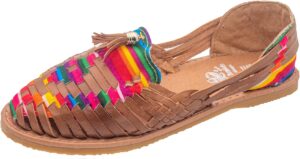
The original Mexican handicraft
To make an original Mexican sandal, it is necessary to resort to the leaves of henequen, the agave family.
The weaving is complicated in the case of Mexican sandals of vegetable origin.
Today, Mexican sandals have rubber soles similar to those of any commercial shoe, although lately new types of huaraches with esparto soles similar to those of wedges or with plastic platforms are flourishing.
Regarding the leather of the huaraches, in practically all of them cowhide leather is used, since it is the leather that assures the best quality and comfort at a reasonable price.
The leather dyeing process is done with vegetable products, reducing the use of chemical products to a minimum.
There are also Mexican sandals with synthetic materials such as plastic, but both the comfort and the quality of the huarache suffer a lot.
Mexican designers have incorporated fabric, ornaments, and other accessories to the sandals, for a different aesthetic touch.
Mexican sandals durability
Mexican sandals are comfortable, highly appreciated by many, they resist the wear and tear of time, even in the face of sports designer footwear.
The Metropolitan University of Mexico rescues the case of Lorena Ramirez, a Tarahumara woman who stood out in the “Ultra Trail” marathon in 2017 in which athletes from 12 countries around the world participated.
READ MORE: THE ULTIMATE GUIDE TO TIPPING IN CANCUN: ESSENTIAL TIPS FOR TRAVELERS
This unique indigenous woman did not wear clothes created by any brand or sports shoes designed by computer with space-age materials, but only her traditional skirt, a cap, bandana and a pair of huaraches, and so at more than 40 degrees of temperature, with this footwear, Lorena Ramirez took the top prize, winning first place.
Advantages of the sandals
The original Mexican sandals, after some time of use, mold perfectly to the foot of the person wearing them, making them a comfortable and free choice of footwear; without leaving aside their ecological value.
A study by the American Journal Physical in Technology, the North American anthropology magazine, reached the following conclusions:
1.- The use of this footwear helps to correct errors in our walking, contributing to better running.
2.- Mexican sandals significantly reduce the chances of any injury related to walking or running, since the muscles around the foot are strengthened and made more flexible.
3.- It improves balance, posture and spinal ailments.
The frequent use of the huarache helps to improve certain pains in the ankles, knees, hips and even in the lumbar area, since the supports at the moment of walking or running become coherent and the articulations manage the effort that means running in the way they were designed to do it.
The great advantages of these Mexican sandals, as well as the freshness they give to the feet, their simple and economical manufacture is an incredible source of job creation and fight in the international footwear market.
